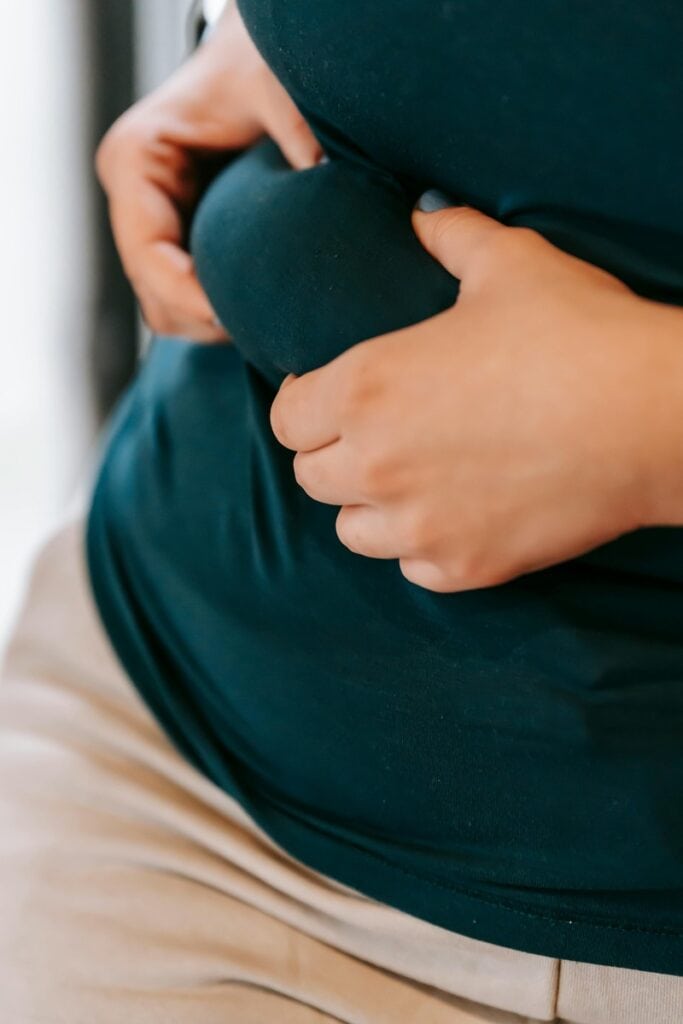
As women step into their 30s and beyond, belly fat often becomes a stubborn reality — even for those who maintain a relatively healthy lifestyle. It’s more than just a cosmetic concern; excess abdominal fat, especially visceral fat, is linked to increased risks of heart disease, type 2 diabetes, hormonal imbalances, and inflammation.
This complete guide explores the science behind belly fat after 30, what really works to reduce it, and how to make sustainable changes that go beyond crash diets or late-night ab challenges.
Why Belly Fat Becomes More Stubborn After 30
After 30, your body begins to experience natural metabolic and hormonal shifts. Here’s what’s really going on behind the scenes:
- Slower metabolism: According to the National Institutes of Health (NIH), the metabolic rate gradually declines with age — especially after 30 — meaning your body burns fewer calories at rest.
- Hormonal changes: Even before perimenopause, fluctuations in estrogen and progesterone can shift fat storage from hips and thighs to the belly.
- Loss of muscle mass (sarcopenia): Muscle burns more calories than fat. With age, we naturally lose lean muscle unless we actively preserve it through resistance training.
All of this leads to a higher tendency to store fat around the abdomen, even if your weight remains stable.
Visceral Fat vs. Subcutaneous Fat
It’s crucial to understand the difference between the two main types of belly fat:
- Subcutaneous fat lies just under the skin and is relatively less harmful.
- Visceral fat wraps around your organs and is metabolically active — meaning it increases inflammation and disease risk.
A study published in the Journal of the American College of Cardiology found that women with more visceral fat had a higher risk of heart disease, even if their BMI was in a healthy range.
How to Effectively Lose Belly Fat After 30
Let’s be clear: you can’t spot-reduce fat, but you can create conditions in your body that encourage fat burning, especially around the belly.
1. Prioritize Strength Training
Muscle is your metabolism’s best friend. Resistance training 3–4 times a week helps:
- Boost resting metabolic rate
- Preserve lean muscle
- Reduce insulin resistance (a key player in belly fat storage)
2. Reduce Processed Sugar and Refined Carbs
High sugar intake spikes insulin, leading to more fat storage — especially around the belly. Replace:
- Sugary drinks with herbal teas or infused water
- Refined carbs (white bread, pasta) with whole grains and fiber-rich foods
According to the CDC, over 60% of U.S. adults consume more added sugar than recommended.
3. Support Hormonal Balance
After 30, hormonal balance becomes crucial. Focus on:
- Sleep: Aim for 7–9 hours. Poor sleep affects cortisol (stress hormone), which promotes fat storage.
- Stress Management: Chronic stress = chronic cortisol = stubborn belly fat.
Try meditation, journaling, or low-impact activities like walking or yoga.
Checkout this article: 12 Proven Tips to Lose Hormonal Belly Fat After 35 (Backed by Science)
4. Track Your Eating Patterns — Not Just Calories
While calorie balance matters, timing and food quality matter more after 30.
- Try Intermittent Fasting (16:8 or 14:10) — shown to improve insulin sensitivity and reduce visceral fat
- Include protein in every meal — it reduces cravings and supports lean muscle
A 2022 Harvard Health study found intermittent fasting reduced belly fat by up to 7% over 12 weeks in overweight women.
5. Stay Consistent — Even When Progress Slows
Most women give up too early because the scale doesn’t budge. But belly fat reduction is often last to show — especially when you’re doing it the right way.
Build a sustainable plan instead of chasing quick fixes:
- 80/20 rule (80% clean, 20% flexible)
- Weekly check-ins, not daily obsessions
- Progress photos, not just scale numbers
Common Myths to Avoid
- “Doing crunches will melt belly fat.”
Ab workouts tone muscles underneath, but they won’t burn fat alone. - “Carbs are the enemy.”
Whole carbs (quinoa, oats, lentils) are vital for energy and hormonal health. - “Skipping meals helps.”
Skipping meals can slow metabolism and increase fat storage signals.
Realistic Timeline: How Long Will It Take?
On average, women see visible belly fat reduction in 8–12 weeks with consistent strength training, proper sleep, and nutrition.
But the timeline varies based on:
- Body type
- Hormones
- Lifestyle and stress levels
Final Words: It’s About Empowerment, Not Perfection
Losing belly fat after 30 isn’t just a physical journey — it’s emotional, hormonal, and personal. Your body is changing, but that doesn’t mean you can’t feel strong, confident, and in control.
The real win? Not just losing inches — but regaining your energy, balance, and belief in yourself.
Read here: 7-Day Belly Fat Detox Plan for Busy Women Over 30
Pingback: Belly Fat Diet Plan For Women Over 30 | Proven Guide
Pingback: 20 Foods That Help Burn Belly Fat Naturally - HighDowns